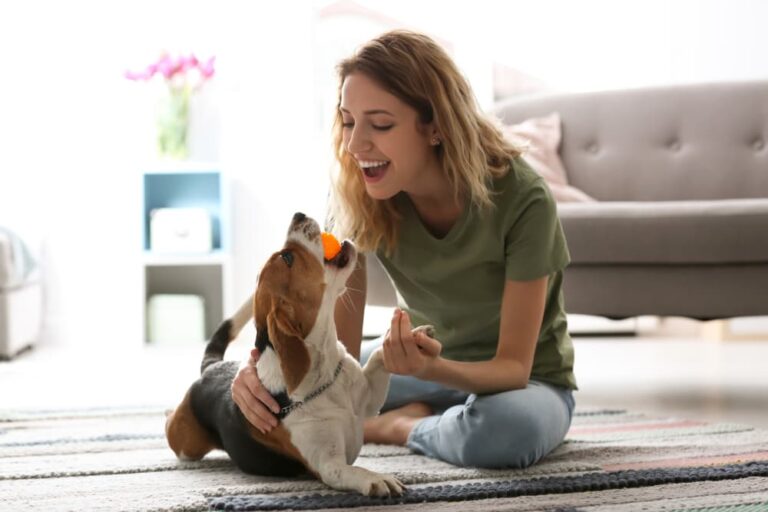
Understanding Dog Reactivity towards Humans: A Guide
Share
For many health-conscious pet owners, understanding the nuances of dog reactivity towards humans is crucial. Whether you're dealing with a newly adopted pet or a longtime furry friend, knowing the signs and underlying causes of reactivity can improve the quality of life for both you and your dog. In this comprehensive guide, we'll delve into the factors contributing to canine reactivity, provide actionable tips for managing it, and explore preventive measures you can take to foster a more harmonious relationship with your pup.

What Is Dog Reactivity?
Dog reactivity refers to the overreaction of dogs to certain stimuli, such as humans or other animals. It often manifests as barking, lunging, or growling when encountering these triggers. Different from aggression, reactivity is usually driven by fear or anxiety rather than the intent to harm. Understanding this distinction is vital for health-conscious pet owners looking to address and manage their dog's behavior effectively.
Causes of Dog Reactivity towards Humans
Numerous factors can contribute to a dog's reactivity towards humans. Environmental influences such as past traumas, lack of socialization, and genetic predispositions all play a role in shaping a dog's demeanor. For instance, a dog that has experienced negative encounters with people in the past may develop a heightened sense of alertness or wariness around new individuals.
Environmental and Socialization Factors
One significant contributor to reactivity is inadequate socialization during the critical puppy years. A dog that doesn't encounter various human experiences during this time may struggle with appropriate responses in adulthood. Learn more about preventive measures in our guide on how to train a reactive dog.
Genetic and Breed Considerations
Some breeds are naturally more prone to reactivity due to their history and genetic makeup. Herding breeds, for example, may be more reactive because they are bred to be alert and responsive to stimuli.
Recognizing the Signs of Reactivity
Recognizing the early signs of reactivity is essential for timely intervention. Key indicators may include increased vigilance, excessive barking, or changes in body posture when encountering humans. Health-conscious pet owners should be vigilant in observing these signs to intervene promptly and appropriately.
Behavioral Cues
Typical behavioral cues of reactivity include stiffened bodies, raised hackles, and intense focus on the stimulus. A rapid shift in demeanor, such as moving from calm to alert, can also signal a reactive episode. Explore more about reactive dog training to understand deeper behavioral insights.
Managing Dog Reactivity towards Humans
While managing reactivity may seem challenging, there are several effective strategies you can employ. From training techniques to environmental adjustments, understanding how to respond can drastically reduce a dog's reactivity episodes.
Training Techniques for Reducing Reactivity
Training is perhaps the most effective way to manage and reduce a dog's reactivity towards humans. Positive reinforcement, where good behavior is rewarded, can encourage a dog to respond calmly to stimuli. Courses such as those offered in dog reactivity towards other dogs offer invaluable insights for a multi-faceted approach.
Using Environment to Your Advantage
Control your dogs environment to minimize exposure to triggers that cause reactivity. Simple adjustments like walking during quieter times, using calming aids, or creating safe spaces can be instrumental. For more recommendations, check out settle training advice from canine experts.
Preventive Measures and Long-term Solutions
Effective management of reactivity doesn't stop at temporary fixes. Long-term, sustainable strategies are vital for overall canine well-being and better relationship bonding.
Consistent Socialization Efforts
Consistent exposure to various human experiences can help desensitize a reactive dog. Regular visits to dog-friendly spaces and gradual introduction to new individuals can promote positive interactions and reduce fear-based responses.
Ongoing Training and Support
Continuous training and behavior monitoring are essential for ensuring that reactive behaviors do not return. Engaging in training refresher courses and consulting with professional behaviorists can provide health-conscious pet owners with the support they need to succeed.
Conclusion: A Journey of Patience and Understanding
Understanding and managing dog reactivity towards humans requires patience, dedication, and a deeply empathetic approach. By recognizing the underlying causes, implementing effective management strategies, and fostering a supportive environment, pet owners can make incredible strides in enhancing their dogs quality of life. For ongoing advice and support visit training your dog.

FAQ
How can I tell if my dog is reactive?
A reactive dog typically displays signs like excessive barking, lunging, and showing anxiety in specific situations involving humans or other stimuli.
Can training really help in reducing a dog's reactivity?
Yes, consistent training and positive reinforcement methods are highly effective in managing and reducing reactivity.
Is it possible for reactive dogs to improve over time?
With the right training, environment, and consistent socialization efforts, many dogs can show significant improvement in their reactive behaviors over time.
This article contains affiliate links. We may earn a commission at no extra cost to you.
